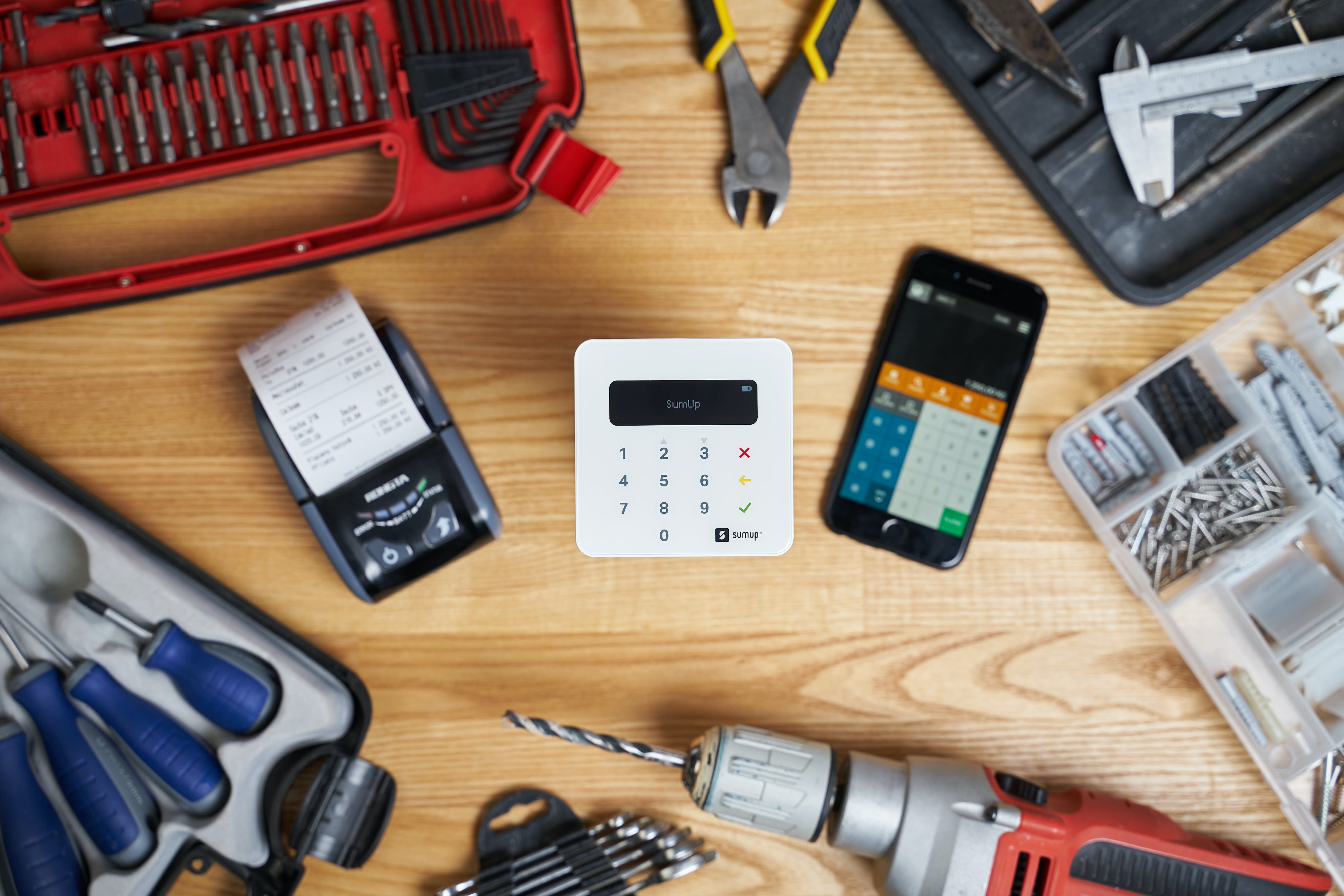Top Yi IOT App Alternatives for Smart Home Users!

The Yi IOT app has been a significant player in the realm of smart home technology, providing users with the ability to seamlessly control and monitor their connected devices. As a hub for home automation, the Yi IOT app lets users manage everything from security cameras to lighting systems, all from their smartphones. However, with the ever-evolving landscape of the Internet of Things (IoT), users may seek Yi IOT app alternatives that offer enhanced features, better user interfaces, or improved compatibility with a broader range of devices.
Exploring Yi IOT app alternatives is crucial for those who want to expand their smart home ecosystem beyond the confines of a single brand or for those who may have encountered limitations in the existing app. These alternatives often provide more flexibility, allowing users to integrate devices from various manufacturers and access more sophisticated automation routines. Thus, they can optimize their smart home experience to reach new heights of convenience and efficiency. As we delve into the top alternatives, it is essential to consider factors like ease of use, customization options, and the level of support provided for third-party devices.
At Biz4Solutions, we understand the importance of staying ahead of technological advancements. We are committed to helping you navigate through these choices, ensuring that you select a software solution that aligns with your specific needs and enhances your smart home experience.
Exploring the Best Alternatives to Yi IOT App

When searching for the best Yi IOT app alternatives, smart home users have a plethora of options to consider. Each alternative offers unique features that cater to different preferences and home automation needs. One popular choice is Google Home, known for its integration with a wide array of devices and its user-friendly voice control capabilities. Another formidable competitor is Amazon Alexa, which stands out with its robust third-party skill support and seamless integration with Amazon services.
Apple HomeKit is another excellent alternative, especially for users who are deeply invested in the Apple ecosystem. It offers a highly secure and streamlined experience, though it’s limited to compatible Apple devices. For those prioritizing open-source flexibility, Home Assistant offers a powerful platform that supports a vast number of devices and allows for extensive customization, but it may require a steeper learning curve for new users. Lastly, SmartThings by Samsung is a strong contender offering compatibility with a wide range of devices and an intuitive interface.
It’s important to note that each of these alternatives has its own set of strengths and weaknesses. Users must weigh factors such as platform compatibility, ease of device pairing, level of technical support, and community engagement when deciding which app is the most suitable replacement for the Yi IOT app in their smart home setup.
Features to Consider in a Smart Home App Alternative
Identifying the ideal Yi IOT app alternative requires a thorough evaluation of certain key features that can significantly enhance the smart home experience. Firstly, compatibility is crucial; the app must seamlessly connect with the existing smart devices in your home. A comprehensive device support list ensures users can manage all their gadgets through a single interface.
Another essential feature is the user interface (UI), which should be intuitive and user-friendly, allowing users to easily navigate and control their smart home devices. Robust automation capabilities are also vital, as they enable users to set custom scenes and routines that can automate daily tasks based on user preferences or schedules.
Security features are non-negotiable in the realm of smart home management. Strong encryption and privacy controls help protect users from unauthorized access and ensure their data remains secure. Additionally, users should look for real-time notifications and alerts, which provide immediate updates on the status of their devices, enhancing the overall safety and responsiveness of the smart home system.
Lastly, community and technical support are important considerations, especially for troubleshooting issues or exploring advanced functionalities. An active user community can offer valuable insights and assistance, while reliable customer service ensures any technical hiccups are swiftly resolved. When evaluating alternatives, these features should be at the forefront to ensure a smooth and efficient smart home experience.
Enhancing Home Security with Reliable Yi IOT Alternatives
.jpg)
Home security stands as a paramount concern for smart home users, and finding a Yi IOT app alternative that prioritizes this aspect is essential. A robust alternative should offer advanced encryption to safeguard data transmission between devices and the cloud. It’s also imperative for the app to support secure login methods, such as two-factor authentication, adding an extra layer of protection against unauthorized access.
Real-time monitoring is a feature that cannot be overlooked. Users should opt for an app that provides live feeds from security cameras and sends instant alerts for any unusual activity detected in or around their property. This enables homeowners to take timely action, whether it’s a false alarm or an actual threat.
The ability to integrate with a wide range of security devices, including smart locks, motion sensors, and alarm systems, is another crucial factor. Such integration ensures comprehensive coverage and control over all security aspects of the smart home environment. The best alternatives will facilitate customizable automation of these devices, allowing for scenarios such as doors locking automatically at a certain time or lights turning on when motion is detected after dark.
Lastly, a strong Yi IOT app alternative should include features like geofencing, where the system can arm or disarm itself based on the user’s location, and voice control compatibility, offering hands-free operation and swift responses to security commands. These features collectively enhance the security and convenience of managing a smart home, providing peace of mind to homeowners.
Integrating Devices Seamlessly with Top Smart Home Apps

The ability to integrate various smart devices seamlessly is a hallmark of an excellent Yi IOT app alternative. Users should look for applications that support a broad spectrum of smart home gadgets and appliances from different manufacturers. This compatibility ensures that homeowners can manage their entire home ecosystem from a single interface, without the need to switch between multiple apps.

Connectivity protocols such as Wi-Fi, Zigbee, and Z-Wave are vital for a smooth integration experience. A top-tier alternative will often boast a user-friendly interface that simplifies the process of adding and configuring new devices. It should guide users through the setup and provide easy-to-follow instructions, making the integration as straightforward as possible.
Another important aspect is the app’s ability to facilitate inter-device communication. Devices should be able to trigger actions in other connected devices, creating a truly interconnected smart home environment. For instance, a smart thermostat could adjust the temperature based on readings from a network of temperature sensors, or a smart doorbell could activate indoor lights when it detects motion at night.
Moreover, customization plays a significant role. An alternative app should offer extensive customization options, allowing users to create scenes and routines that automate device behavior based on time, location, or other triggers. This level of automation not only enhances the user experience but also contributes to energy efficiency and savings by optimizing device operation.
Maximizing User Experience with Innovative Home Automation Apps

Maximizing the user experience is at the core of what drives the development of innovative home automation apps that serve as Yi IOT app alternatives. These applications not only offer control over smart devices but also enhance the quality of life for their users. Advanced apps are designed with an intuitive user interface, ensuring that even the most complex tasks are simplified and accessible to all users, regardless of technical expertise.
Personalization features are also a key component, allowing users to tailor the app to their specific preferences and needs. This can include customizing dashboards, setting up favorite device controls, or receiving personalized notifications. The goal is to create an app environment that feels familiar and unique to each user, making daily interactions with their smart home both comfortable and enjoyable.
Moreover, an outstanding alternative will often incorporate voice assistant compatibility, such as integration with Amazon Alexa or Google Assistant, enabling users to perform tasks hands-free. This level of convenience is particularly beneficial for users with mobility issues or for those times when manual interaction isn’t possible.
For those looking to elevate their smart home experience and explore the full potential of their connected devices, Biz4Solutions provides an array of custom software development services. Our offerings are designed to meet the diverse needs of smart home users, ensuring that your digital solutions are not only innovative but also reliable and future-proof. Contact us today to discover how we can help you transform your home into a seamless and highly automated environment.
How IoT Elevates Efficiency in Smart Factories

The dawn of the Internet of Things (IoT) has ushered in a transformative era for manufacturing industries. Smart factories, equipped with IoT technologies, are redefining what it means to operate with efficiency and precision. By interconnecting machinery, devices, and systems, a smart factory harnesses data-driven insights to optimize production processes, reduce waste, and enhance overall productivity. IoT implementation in a smart factory involves deploying a network of sensors and connected devices that communicate seamlessly, creating a cohesive ecosystem that can think, predict, and act autonomously.
These sophisticated IoT systems facilitate real-time monitoring and analytics, empowering businesses to make informed decisions swiftly. As a result, manufacturers can anticipate maintenance needs, streamline supply chains, and offer superior products with greater speed to market. Understanding how is IoT being implemented in a smart factory is crucial for any business aiming to remain competitive in the fast-evolving industrial landscape.
Key Benefits of IoT Implementation in Factories

IoT implementation within factory settings has become a cornerstone of modern industrial strategies, offering a multitude of benefits that drive efficiency and output. One of the most significant advantages is the enhanced operational efficiency. By providing real-time data on every aspect of the manufacturing process, IoT enables factories to optimize equipment performance, reduce downtime, and save on energy costs.
Another key benefit is predictive maintenance. IoT systems can predict when machines are likely to fail or require servicing, allowing for maintenance to be scheduled proactively instead of reactively. This not only prevents costly production halts but also extends the lifespan of machinery.
Moreover, IoT facilitates improved product quality. With sensors continuously monitoring production lines, any anomalies can be detected early, ensuring that any issues are addressed before they impact the end product. Additionally, the rich data generated can be used to refine processes and improve the quality over time.
Inventory management also sees a transformation with IoT. Smart inventory systems help in tracking materials and products in real time, reducing waste, and ensuring that stock levels are maintained optimally, preventing both overstocking and stockouts.
Lastly, IoT enhances safety and compliance. Sensors can monitor environmental conditions and ensure that operations are within regulatory parameters, while also keeping workers safe by alerting them to potential hazards.
The cumulative effect of these benefits is a robust boost to the competitiveness of factories, as they are able to produce higher quality products more efficiently and with greater responsiveness to market demands.
Real-Time Monitoring and Control via IoT

The ability to monitor and control factory operations in real time is a game-changer that IoT brings to the industrial sector. Through a network of connected sensors and devices, factory managers gain unprecedented visibility into their operations. This real-time data stream aids in making informed decisions that can lead to immediate improvements in productivity and efficiency.
Real-time monitoring through IoT also enables the detection of inefficiencies and bottlenecks as they occur. This allows for quick adjustments to be made, which can significantly reduce waste and improve throughput. With IoT, equipment can be controlled remotely, allowing for adjustments to be made on the fly without the need for manual intervention, further enhancing operational agility.
Furthermore, the integration of IoT with factory systems facilitates automated quality control. High-precision sensors can detect even the smallest deviations in product specifications, triggering corrective actions automatically to ensure consistent quality. This level of control is essential for maintaining high standards and meeting customer expectations consistently.
Another aspect where real-time monitoring plays a critical role is in the supply chain optimization. IoT provides insights into the status of goods as they move through the supply chain, helping to optimize inventory levels and reducing the risk of delays or shortages.
In summary, the real-time capabilities of IoT foster a proactive rather than reactive approach to factory management, leading to heightened control, optimized operations, and a more agile and responsive manufacturing process.
Predictive Maintenance with IoT Analytics
Predictive maintenance stands as a cornerstone of IoT applications in smart factories, harnessing the power of IoT analytics to anticipate equipment failures before they occur. This proactive approach relies on the continuous collection and analysis of data from sensors embedded in machinery, which monitor various parameters such as vibration, temperature, and humidity.
By leveraging advanced analytics and machine learning algorithms, IoT systems can identify patterns and anomalies that signal potential issues. This predictive insight allows maintenance teams to address problems before they escalate into costly downtime, thereby minimizing disruption and extending the lifespan of factory equipment.
Moreover, predictive maintenance schedules can be optimized based on actual equipment usage and performance data, rather than relying on less efficient time-based schedules. This ensures maintenance is performed only when necessary, reducing the frequency of interventions and conserving resources.
The integration of IoT analytics into maintenance strategies not only enhances operational efficiency but also contributes to a safer working environment. By preemptively identifying risks, factories can avoid hazardous conditions that might arise from equipment failure. Workforce safety is thus significantly improved, fostering a culture of trust and reliability within the organization.
Overall, predictive maintenance with IoT analytics exemplifies the transformative impact of digital technologies on industrial maintenance protocols, driving the evolution of smart factories towards greater efficiency, safety, and sustainability.
IoT-Driven Supply Chain Optimization

In the context of smart factories, IoT-driven supply chain optimization is a game-changer, enhancing transparency and responsiveness across the entire production and distribution network. By integrating IoT devices throughout the supply chain, businesses gain real-time visibility into materials flow, inventory levels, and shipment statuses. This enables them to respond swiftly to changing market demands and unexpected supply chain disruptions.
IoT sensors can track the location and condition of goods in transit, ensuring sensitive products are maintained within optimal parameters, such as temperature or humidity. This level of monitoring not only reduces the risk of spoilage or damage but also strengthens compliance with quality standards and regulations.
Furthermore, the data collected through IoT devices helps in refining forecasting models and demand planning. With better forecasts, companies can minimize overproduction and underproduction scenarios, leading to more efficient inventory management. This translates into reduced warehousing costs and less capital tied up in unsold stock.
The agility afforded by IoT also allows for dynamic routing and logistics adjustments, which can lower shipping costs and improve delivery times. Customers benefit from this enhanced service level, improving their satisfaction and loyalty to the brand.
Embracing IoT for supply chain optimization not only boosts operational efficiency but also propels businesses towards a more data-driven and customer-centric approach, ultimately giving them a competitive edge in today’s fast-paced market.
Case Studies: Success Stories of IoT in Smart Factories

Examining real-world applications of IoT in smart factories underscores the transformative impact of this technology. Several success stories highlight how IoT implementations have driven significant efficiency gains and competitive advantages for businesses. One such case study involves a major automotive manufacturer that implemented a sophisticated IoT system to monitor production line equipment. The result was a remarkable reduction in downtime and maintenance costs due to predictive maintenance capabilities.
Another case study features a food and beverage company that leveraged IoT for end-to-end traceability of its products. The IoT solution provided granular data on the sourcing, processing, and distribution of products, enhancing quality control and consumer trust. This strategic move not only improved operational efficiency but also reinforced the brand’s commitment to transparency and safety.
These case studies are just a few examples among many that illustrate the potential of IoT in revolutionizing smart factory operations. For organizations looking to embark on a similar journey or seeking to enhance their current systems, Biz4Solutions offers expert guidance and tailored software solutions. Our team of specialists is dedicated to helping businesses unlock the full potential of IoT technologies, ensuring they remain at the forefront of innovation within their respective industries.
Contact Biz4Solutions today to discover how our custom IoT solutions can transform your production processes and supply chain, leading to remarkable efficiency improvements and a solid foundation for sustainable growth.
